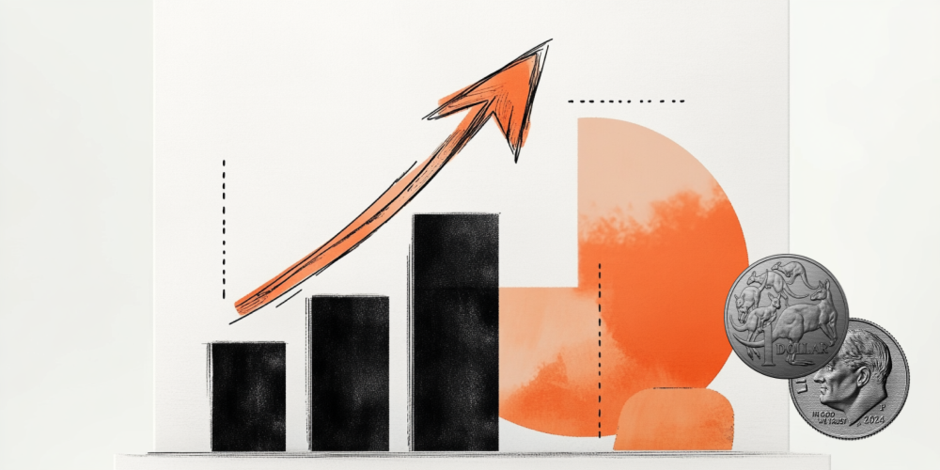Created
: 2025.04.07














![]() 2025.04.07 19:53
2025.04.07 19:53
The AUD/USD pair bounces back to near 0.6040 in Monday's European session from the fresh five-year low of 0.5930 posted earlier in the day. The Aussie pair gains as the Australian Dollar (AUD) strengthens after China's top officials consider accelerating monetary stimulus to stabilize their markets in the face of fresh tariffs announced by United States (US) President Donald Trump on Wednesday.
China's attempt to stimulate their economic growth bodes well for the Australian Dollar, given Australia's high dependency on exports to them.
However, the outlook of the Australian economy remains uncertain as Australian Treasurer Jim Chalmers stated that the nation expects "big hits to us and Chinese growth". Also, a swift acceleration in Reserve Bank of Australia (RBA) dovish bets due to Trump's tariffs could dampen the AUD's performance.
US President Trump has announced 54% reciprocal tariffs on China in an attempt to fix a significant budget deficit. This has led to a trade war between the two as China has also proposed a 34% import duty on the US as a countermeasure.
Additionally, Trump is reluctant to negotiate with Chinese officials to ease tariffs that are resulting in further escalation in trade tensions between the two. "They want to talk, but there's no talk unless they pay us a lot of money on a yearly basis," Trump said over the weekend.
Meanwhile, the US Dollar (USD) demonstrates high volatility as investors expect Trump's tariffs to lead to a US economic recession this year. Analysts at JP Morgan expect the US economy to end the year with a 0.3% decline in the Gross Domestic Product (GDP) growth.
Generally speaking, a trade war is an economic conflict between two or more countries due to extreme protectionism on one end. It implies the creation of trade barriers, such as tariffs, which result in counter-barriers, escalating import costs, and hence the cost of living.
An economic conflict between the United States (US) and China began early in 2018, when President Donald Trump set trade barriers on China, claiming unfair commercial practices and intellectual property theft from the Asian giant. China took retaliatory action, imposing tariffs on multiple US goods, such as automobiles and soybeans. Tensions escalated until the two countries signed the US-China Phase One trade deal in January 2020. The agreement required structural reforms and other changes to China's economic and trade regime and pretended to restore stability and trust between the two nations. However, the Coronavirus pandemic took the focus out of the conflict. Yet, it is worth mentioning that President Joe Biden, who took office after Trump, kept tariffs in place and even added some additional levies.
The return of Donald Trump to the White House as the 47th US President has sparked a fresh wave of tensions between the two countries. During the 2024 election campaign, Trump pledged to impose 60% tariffs on China once he returned to office, which he did on January 20, 2025. With Trump back, the US-China trade war is meant to resume where it was left, with tit-for-tat policies affecting the global economic landscape amid disruptions in global supply chains, resulting in a reduction in spending, particularly investment, and directly feeding into the Consumer Price Index inflation.
![]()
Created
: 2025.04.07
![]()
Last updated
: 2025.04.07

FXStreet is a forex information website, delivering market analysis and news articles 24/7.
It features a number of articles contributed by well-known analysts, in addition to the ones by its editorial team.
Founded in 2000 by Francesc Riverola, a Spanish economist, it has grown to become a world-renowned information website.
We hope you find this article useful. Any comments or suggestions will be greatly appreciated.
We are also looking for writers with extensive experience in forex and crypto to join us.
please contact us at support@myforex.com.
Disclaimer:
All information and content provided on this website is provided for informational purposes only and is not intended to solicit any investment. Although all efforts are made in order to ensure that the information is correct, no guarantee is provided for the accuracy of any content on this website. Any decision made shall be the responsibility of the investor and Myforex does not take any responsibility whatsoever regarding the use of any information provided herein.
The content provided on this website belongs to Myforex and, where stated, the relevant licensors. All rights are reserved by Myforex and the relevant licensors, and no content of this website, whether in full or in part, shall be copied or displayed elsewhere without the explicit written permission of the relevant copyright holder. If you wish to use any part of the content provided on this website, please ensure that you contact Myforex.
Myforex uses cookies to improve the convenience and functionality of this website. This website may include cookies not only by us but also by third parties (advertisers, log analysts, etc.) for the purpose of tracking the activities of users. Cookie policy